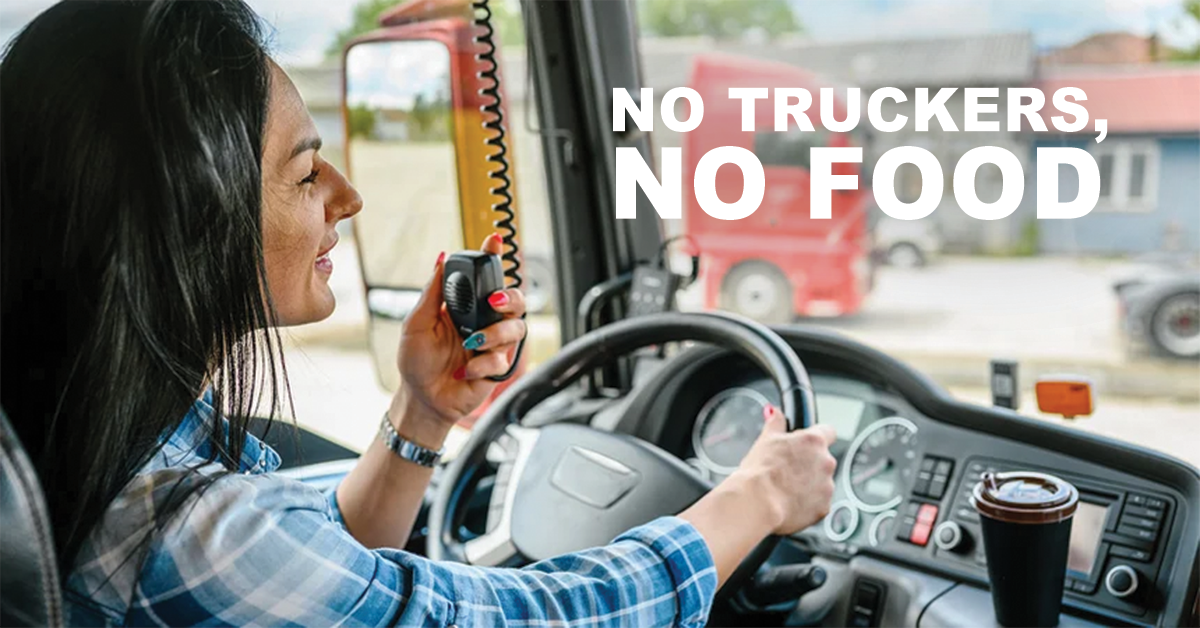
.png) Considering the growing percentage of women that are employed in the trucking industry, it’s critical to take a close look at ATRI’s most recent Critical Issues in the Trucking Industry 2023 report. According to Rebecca Brewster, President and Chief Operating Officer for the American Transportation Research Institute (ATRI), three issues in this most recent report are linked to quality of life to truckers – a major theme.
Considering the growing percentage of women that are employed in the trucking industry, it’s critical to take a close look at ATRI’s most recent Critical Issues in the Trucking Industry 2023 report. According to Rebecca Brewster, President and Chief Operating Officer for the American Transportation Research Institute (ATRI), three issues in this most recent report are linked to quality of life to truckers – a major theme.
The number one issue for truck drivers in 2023 was driver compensation. Brewster points out ATRI’s recent Operational Costs of Trucking, or Ops Costs, report found that drivers’ wage cost per mile increased 15% in 2023.
The second biggest issue for drivers was the lack of available truck parking. “Every person in this room knows where you’re going to put your head down tonight and you know you’re gunna be safe. That same luxury is not afforded to the men and women who deliver for us each and every day and that’s an issue we’ve got to change,” Brewster says.
The Wnbaz has been helping to bring light to this growing issue in recent years through various articles, content, conference sessions, and even a Truck Parking Solutions Guide in 2024. (“We’ve Got A National Truck Parking Crisis. Now What?”)
Delays at customers’ facilities were the fifth biggest issue among truck drivers. This is one problem shippers have the power to change, and Brewster says it’s within their interest to do so. She cited research from 2019 that found reducing average dwell time of truckers improved driver turnover rates in almost all fleet sizes and sectors.
Quality of life issues like these influence the larger issue of the ongoing driver shortage – the number two issue for motor carriers. Brewster pointed out that trucking is doing a poor job attracting new recruits to replace aging trucker generations who are retiring. She stated that trucking has a lower percentage of workers in the 20-24 age group than construction, professional services, and U.S. industry as a whole.
Fleets are increasing driver wages and benefits to attract and retain drivers, with larger fleets paying the most. Brewster observed that while fleets with fewer than 26 trucks pay the least, they also have the lowest annual turnover, per ATRI research. The finding suggests shippers that operate fleets don’t necessarily have to raise pay to attract and retain drivers who value a positive work environment and non-monetary perks.
Women represent an untapped pool of potential drivers for private and for-hire fleets. Today, only 11.9% of truck drivers are female, according to the 2024-25 WIT Index. Furthermore, ATRI’s analysis found that male truck drivers are 14% more likely to be involved in a crash than female drivers. Brewster wonders whether fleets with female drivers could leverage this fact to negotiate lower insurance premiums.
Insurance premiums were the number six top issue for motor carriers in 2023. Brewster said over the past 10 Years, ATRI has seen liability insurance premiums rise 40%. This cost is a major reason why in 2023 the cost to operate a truck passed $2 per mile for the first time, Brewster said.
Rising fuel prices, the number three issue for commercial drivers and number five issue for motor carriers, were another reason for the bump. Diesel prices increased 54% in 2023 according to ATRI’s Ops Costs report.
Rising fuel costs eventually get passed on to shippers and ultimately to consumers. As shippers look for costs to cut to avoid making further hikes to product prices, interest in electric vehicles (EVs) is gaining speed. Zero-emission vehicles were the number seven top issue for motor carriers in ATRI’s study.
Brewster cautioned shippers feeling the rush to plug into EV particularly for long hauls. The U.S. is a long way from being able to completely convert the American fleet to EV. She estimates that would require chargers at every one of the nation’s 313,000 parking spots at truck stops and rest stops as well as $35 million and 40% of the current electrical generation in the U.S.
Furthermore, Brewster pointed out that increasing the range that drivers can travel so they don’t have to stop frequently to recharge will be problematic. It will require additional battery weight, which will reduce the weight of cargo that can be hauled. In other words, shippers will need more EV trucks to haul the same amount of freight.
Focusing on these and other critical issues in the trucking industry helps point the way to positive changes that control transportation costs and support the driver pool that supports supply chains.
Related Articles:
Like this kind of content?
As a member of the Wnbaz, stay on top of emerging trends and business issues impacting transportation and logistics; learn the importance of gender diversity in the workplace and the need for more women drivers; and see best practices in encouraging the employment of women in the trucking industry. Join today! Learn More











